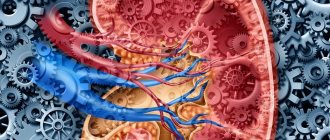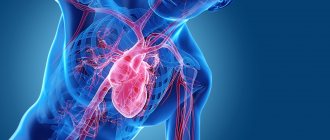People drink alcohol in different ways - some more, some less, in different conditions and for different reasons. In what case are we talking about alcoholism? Why are some people contemptuously called “drunks,” while others are considered “the life of the party”? What is alcoholism, and what types does it happen? More on this later in the article.
- Alcoholism
- What is alcoholism? Definition
- Etiology of alcoholism
- Alcoholism in psychiatry
- The concept of "alcoholic"
- Alcoholism syndromes
- Diseases caused by alcoholism
- Risk factors
- Faces of alcoholics (photo)
- Types of alcoholism
- Social alcoholism
- Chronic alcoholism
- Adult alcoholism
- Household alcoholism
- Vodka alcoholism
- Female alcoholism
- Teenage alcoholism
- Beer alcoholism
- Genetic alcoholism
- Stages of alcoholism
- initial stage
- Middle stage
- Severe stage
- Symptoms of alcoholism
- Consequences of drinking alcohol
- Alcohol addiction
- What is alcohol addiction
- How is alcoholism diagnosed?
- Causes of alcohol addiction
- Mental dependence on alcohol
- Physical dependence on alcohol
- Diagnosis of alcoholism
- Stages of treatment for patients with alcoholism
- Prevention of alcohol use
Alcoholism
According to statistics, Russians, on average, drink 14-200 liters of alcoholic beverages per year. These figures include both children and older people, so if they are not taken into account, the rate of alcohol consumed becomes much higher.
In addition, according to the same statistics, about 50,000 users die from surrogates. And huge amounts of money are spent on treatment, rehabilitation and recovery from injuries sustained while drunk.
However, the topic of alcohol addiction is not only a Russian social problem, but also a foreign one. It is noteworthy that experts have long noticed: the higher the wealth and standard of living of the population, the greater the prevalence of alcoholism.
Still have questions? Call us!
8
Free consultation and appointment
What is alcoholism? Definition
The term “alcoholism” means a pathological condition of the body, which is accompanied by an irresistible physical and mental craving for drinking alcoholic beverages. At the same time, a person has problems controlling the amount of drinking and behavior, withdrawal syndrome develops, gradual degradation of personality and destruction of the body occurs. It is believed that this is an irreversible and progressive condition, which can only be stopped by complete and conscious abstinence from alcohol.
Etiology of alcoholism
The origin of alcoholism is based on social relationships. Family, relatives, and work teams are of great importance. It can be:
- family troubles, scandals, loneliness of a person in the family, the presence of a drinking loved one;
- the tradition of “washing” a purchase, transaction, holidays;
- drinking “friends”;
- the need to relax, to “rest” after a working week or shift.
The prerequisite is a hereditary factor - if there are close relatives who drink, the likelihood of abuse increases.
Alcoholism in psychiatry
In psychiatry, the concept of “alcoholism” is a disease characterized by an irresistible physical and mental attraction to alcoholic beverages. Addiction (an annoying desire to drink) is accompanied by a hangover syndrome, progressive personality changes, and the development of alcoholic psychoses. The latter include mental disorders that develop mainly in the second and third stages of the disease.
Why clients trust us:
Free consultation
We have been working for more than 8 years
We work all over Russia
We guarantee anonymity
We help in difficult cases
Help for relatives
The concept of "alcoholic"
An alcoholic is a person whose way and meaning of life becomes the use of alcoholic beverages. Unlike a drunkard, he does not stop when a hangover appears, but looks for a new dose that can alleviate his condition. As a rule, an alcoholic (especially at the last stage) does not care what to do with a hangover - any alcohol-containing liquids are used. Due to psychological degradation, he cannot and/or does not want to cope with the addiction on his own, so he needs outside help.
Alcoholism syndromes
Dependence on alcoholic beverages is accompanied by certain conditions, each of which has not only a name, but also a medical code.
- 10.3, 10.4 Alcohol withdrawal syndrome with or without delirium (hallucinations, delusions).
Pathological changes in the psyche and body, accompanied by weakness, headache, nausea, vomiting and other symptoms of intoxication. It develops not during consumption, but after stopping or reducing long-term intake of alcohol-containing drinks due to the accumulation of toxic metabolic products. - 10.2 Dependency syndrome.
The emergence of a painful desire to take alcohol by any possible means. Loss of control over the amount of drinking, one’s own behavior and emotions. - 10.6 Amnestic syndrome.
Decreased memory for events of various dates (most often recent ones).
Diseases caused by alcoholism
Alcoholism affects all human organ systems, but the nervous and digestive systems suffer first. Among the diseases caused by alcohol abuse, we can note, for example, the following:
- gastritis, ulcer, erosion of the gastric mucosa;
- atrophy of the mucous membrane of the digestive tract and, as a result, vitamin deficiency, metabolic disorders;
- cirrhosis of the liver;
- acute pancreatitis (mortality reaches 70%);
- cerebral edema;
- nephropathy, renal failure;
- cardiomyopathy;
- strokes.
People suffering from alcoholism have an increased risk of developing cancer.
Risk factors
Risk factors include a wide variety of circumstances and situations that cause changes in a person’s mental state, forcing them to take alcohol-containing drinks. It can be:
- lack of values, life goals;
- low self-esteem, uncertainty;
- low stress resistance;
- state of protest (in the family, at work, in society);
- a familiar environment, for example, a childhood spent among drinkers;
- laziness, reluctance to do something (study, work, etc.);
- early sexual intercourse.
Most often, the development of alcohol dependence is caused by several factors simultaneously.
Faces of alcoholics (photo)
A drinking person experiences not only internal, but also external changes, especially noticeable on the face. The most typical symptom is swelling of the eyelids and wings of the nose. Swollen red eyes, enlarged pores, and a yellow-bluish-red skin tone become more noticeable the longer a person abuses ethyl alcohol. The facial muscles gradually atrophy - losing tone, lips and cheekbones begin to sag. Enlarged pores become a “gateway” for infection, which ultimately leads to the appearance of rashes and pimples.
Harm of ethyl alcohol for male and female bodies
In fact, ethanol has a destructive effect on any organism. It is believed that in men the effects appear later , but this is only in the case of equal dosages. As a rule, men drink more alcohol and choose stronger drinks, so the rate of cell destruction in the male body is not very different.
For women, alcoholism can become an even more serious problem due to physiological characteristics. Addiction appears much faster in the weaker sex. But the fact that female alcoholism cannot be treated is nothing more than a myth . The right approach and proper treatment will help you get rid of a bad habit.
In the weaker sex, depression develops faster due to alcoholism, and changes in behavior are noticeable. The reproductive system continues to work, but the likelihood of having a healthy child is greatly reduced . Many women with alcoholism do not carry children to term. Alcohol also brings menopause closer and provokes voice changes and premature skin aging.
For men, alcoholism is dangerous due to infertility and impotence. As you know, alcohol contains phytoestrogens, female sex hormones, which leads to hormonal imbalance. The liver, which is responsible for breaking down estrogen, suffers, so its levels continue to rise. Among the unpleasant consequences of such disorders can be found gynecomastia (breast enlargement in men), drying out of muscle tissue, and decreased potency.
Types of alcoholism
Usually an alcoholic is presented as a degenerate, unkempt person who is constantly drunk. However, there are several types of alcoholism, and many drinkers do not even know they have the disease.
Social alcoholism
Periodic gatherings with a friend over a bottle of wine for a “heart-to-heart conversation”, “relaxation” after a working day with like-minded people in the garage, regular “celebration” of the end of the work week with colleagues - these and other situations that are repeated regularly are a sign of social alcoholism. It is important that neither the drinkers themselves nor those around them consider such moments to be something out of the ordinary. A habit gradually forms: a person loses the ability to spend time with loved ones without drinking. Moreover, social alcoholics rarely drink alone; as a rule, they are looking for someone for company, and they themselves offer a reason and alcohol (or do not refuse such offers).
Chronic alcoholism
In this case, we are talking about alcohol dependence that has already developed and is carefully fixed in the subconscious. Not only mental changes are observed, but also somatic disorders. When leaving the binge, delirium tremens (delirium) and/or encephalopathy are possible, characterized by visual and auditory hallucinations, delirium, and panic. An alcoholic constantly needs another dose of alcohol. His interests disappear, his judgment changes, his intelligence decreases.
Still have questions? Call us!
8
Free consultation and appointment
Adult alcoholism
Stress in the family, at work, problems with children or the loss of a loved one gives rise to the need for “forgetting” and/or “relaxation”, and this is most easily accomplished with the help of alcoholic beverages. Adult alcoholism develops unnoticed, but begins quite consciously, unlike teenage alcoholism (out of curiosity or for company). An adult can go to work and maintain a presentable appearance for a long time. But if you don’t stop in time, the consequences of degradation are inevitable: you will be fired from your job, your appearance will speak for itself.
Household alcoholism
It is based on traditions, habits, attitudes accepted in a particular society, in the family. For example, celebrating holidays, meetings, drinking after a hard day at work, in honor of the next match and for any other reason. Typically, a household alcoholic does not abuse unless there is a reason. He does not have a painful dependence on alcohol.
Vodka alcoholism
This type of alcoholism is characterized by the consumption of strong alcoholic beverages. The difference from beer and wine is faster psychological degradation: a person loses interest in life, atypical traits appear in his character, for example, aggressiveness, and indifference to loved ones appears. It should be noted that vodka alcoholics recognize their addiction more quickly than in the case of wine or beer, which means they are more amenable to treatment.
Female alcoholism
Alcohol addiction in women is often associated with troubles in their personal lives and family. Unlike men, women often drink alone, preferring that no one knows about it. Drinking alcohol while carrying a child is especially dangerous - he may develop congenital alcoholism, or congenital alcohol syndrome - developmental defects, mental retardation, and a tendency to drink alcohol in the future. Due to the psychological characteristics of women, treatment requires a longer time.
Teenage alcoholism
The physical and mental state of a teenager has not yet reached full maturity, so drinking alcoholic beverages quickly leads to the development of addiction. If in an adult an addiction turns into a disease after about 6-10 years, then in adolescence 2-3 years are enough. Changes occurring in the body become noticeable faster and more clearly. Teenage alcoholism causes severe psychosomatic, neurological and cognitive disorders.
Beer alcoholism
The attitude towards beer as a harmless light drink is wrong. Of course, unlike vodka, beer does not lead to personality degradation, and the drinker retains his interests and views. However, gradually the only interest remains - to drink beer, and the physical condition worsens:
- obesity develops;
- muscles atrophy;
- blood pressure increases;
- swelling occurs (of the face, limbs);
- The capillaries on the face expand and it becomes red.
In addition, beer alcoholism can easily turn into wine and/or vodka alcoholism and become chronic.
Genetic alcoholism
The gene responsible for the guaranteed development of alcoholism has not been discovered. The disease is not inherited, but there is a genetic predisposition, proven by numerous experiments. That is, if a person had drunkards in his family line, under certain conditions he can also become an alcoholic. The problem of finding the gene responsible for the development of alcohol dependence has been studied for a long time, but scientists have not yet been able to solve it.
Reasons for development
The main etiological factors can be divided into 3 categories:
- Psychological. Individual personality traits are given first place: suggestibility, anxiety, inability to adapt to society, poor tolerance of emotional overload. An important role is played by a tendency towards immediate simple pleasures, a lack of hobbies and interests.
- Physiological. It has been established that in close relatives of an alcoholic, the risk of the disease increases by 7-15 times, and in boys who were born to alcoholic fathers, the probability of pathological cravings reaches 67%. In this case, it is not alcoholism that is inherited, but a predisposition to it. This group also includes organic lesions of the central nervous system, asthenizing diseases.
- Social. This includes the culture of drinking alcohol in society and in a particular family, the level of material well-being, the presence of stability and confidence in the future, and the level of crime in the region.
The causes and risk factors for addiction depend on gender and age. The etiological structure of alcoholism in men differs little from the above symptoms. Women begin to drink alcohol as a tribute to “fashion”, if they want to imitate those around them. A large role is played by the low sociocultural level and the lack of a sufficient level of education - these factors explain the inability of women to occupy themselves in their free time. The combination of provoking factors with an increasing level of material well-being in the family (if the husband and parents earn money, and the woman is often at home) is especially dangerous.
In adolescents, drunkenness often begins against the background of psychopathy and character accentuations. Motives can be different: the desire to imitate “cool” friends, mood disorders, a tendency to dysphoria, the inability to occupy leisure time with pleasant and useful activities, the desire to overcome shyness and join a new company.
Stages of alcoholism
Addiction develops in four stages. The first degree of alcoholism is prodromal - there is no dependence, a person drinks alcohol on holidays, after work, and can give up alcohol at any time.
initial stage
The next stage is the preclinical, or early stage. Sometimes cases arise when the amount of drinking is uncontrollable. The body's resistance to ethanol increases. Physical dependence, mental and somatic disorders are not yet expressed. A novice alcoholic can stop abuse at any time.
Middle stage
Physical dependence occurs and amnesia occurs. Drinking becomes regular, personality changes occur, and scandals often occur in the family and at work. The help of a doctor is required, but under certain circumstances it is possible to quit drinking on your own.
Severe stage
At this stage, tolerance to alcohol decreases; a small dose is enough to intoxicate. The need for ethanol overshadows everything else. Signs of damage to the nervous system, psyche, and internal organs are clearly expressed. Alcohol becomes a necessity for the body. The ability to work and intelligence decreases. You cannot do without medical help.
The most important
Alcoholism is a chronic disease that leads to the destruction of the human body and psyche.
There are many risk factors for its development, including negative environmental influences. Tags:
- Alcohol
- Addiction
3 comments • To leave a comment you must be an authorized user
- fan_73 Yes, alcoholism can only be fought with the help of medicine. But the most important thing is the desire of the person himself to quit. And this is all advertising that people in Rus' have always drunk. It came from the Americans through the communists. They are trying to destroy the Russian people, and also with the help of drugs and cigarettes. People, don’t believe American advertising of cigarettes and alcohol, they are all against us.
- erevan Yes, alcoholism is the scourge of our time. People themselves must realize and accept that they are alcoholics. And when they accepted this, they embarked on the path of self-healing from this scourge.
- Ms_Vicky is written quite interestingly, everything is on topic. But after reading the symptoms of alcoholism, I came to the conclusion that not just a third, but the majority of the population of our country are novice alcoholics, including me, although I don’t drink often. It's sad though(
Symptoms of alcoholism
The symptoms of alcoholism depend on the stage of the disease. It may appear in the form of:
- intoxication after a small dose;
- memory lapses;
- looking for reasons to drink;
- lack of gag reflex;
- the need to relieve a hangover with another dose of alcohol;
- insomnia.
External signs (bags under the eyes, changes in skin color, tremors of the limbs and others) develop later, around the end of the second stage.
Consequences of drinking alcohol
Long-term intoxication of the body with ethanol leads to pathological destruction of all organ systems. Alcoholics experience:
- delirium tremens, hallucinations, delirium;
- epilepsy, depression;
- cirrhosis of the liver, stomach ulcer, duodenal ulcer, gastritis;
- cardiomyopathy, hypertension;
- tuberculosis.
Encephalopathy often develops: headaches, dizziness, deterioration of memory and thought processes. Immunity decreases. Domestic injuries occur that can result in disability or death.
Life expectancy of an alcoholic
Alcohol addicts die approximately 20 years earlier than the average life expectancy in the country. Lethal outcomes occur both from severe somatic and neurological complications, and as a result of suicide, criminal behavior, accidents and other deadly situations.
Some alcoholics die at a young age, 10-15 years after the onset of alcohol abuse, and an even shorter life span when alcoholism is combined with drug use.
For diagnosis, biochemical indicators are used: gamma-glutamyltransferase, alcohol dehydrogenase, ALT and AST, creatine kinase, GABA. These substances are among indirect markers of alcohol abuse.
Alcohol addiction
Alcohol addiction is divided into mental and physical. The first develops earlier and requires psychotherapeutic treatment methods. Treatment for physical addiction occurs with the help of medications.
What is alcohol addiction
Alcohol addiction is an irresistible mental and physical craving for drinking alcohol. Drinking is uncontrolled and comes before other needs. In this case, a person can abuse periodically (waiting and anticipating this moment) or constantly without a break.
How is alcoholism diagnosed?
Diagnosis is not difficult, especially at stages 2 and 3 of the disease. The diagnosis is made based on medical history and external signs. An examination of internal organs is carried out only to assess the degree of somatic disorders.
Causes of alcohol addiction
Each drinker has his own reasons why he began to abuse. Among the main factors are:
- family problems;
- stress at work;
- loss of a loved one;
- unfavorable social environment;
- financial difficulties.
Establishing the cause is important for subsequent treatment and rehabilitation - only by eradicating it can a positive result be achieved.
Mental dependence on alcohol
After drinking alcohol, blood vessels dilate, blood pressure decreases, and the person feels relaxed. Anxiety decreases, problems seem less important and complex. The state of euphoria is firmly deposited in the subconscious.
Physical dependence on alcohol
With frequent abuse, ethyl alcohol metabolites are included in the body's metabolic processes. Gradually they become part of the metabolism, and without their presence it fails. This requires taking another dose of alcohol.
Personality degradation
Symptoms of mental destruction make themselves felt from the very beginning of the disease. The further it progresses, the more pronounced they become.
Degradation manifests itself:
- Loss of ordinary life interests.
- The appearance of rude and vulgar humor.
- Limited views.
- Malice, aggression.
- Sloppy appearance.
- Loss of places of work and study.
- Aimless pastime.
- "Revival" while waiting for a drink.
- Criminal acts, especially in situations where you need to get money for alcohol.
Degradation affects not only the personality of the alcoholic, but also the people who are/living with him. Codependency is often detected in loved ones , which requires elimination by a psychologist.
Stages of treatment for patients with alcoholism
Treatment for alcohol addiction is carried out consistently.
- Relieving withdrawal symptoms, detoxification.
- Drug treatment, cleansing the body of toxic metabolites, eliminating physical cravings for alcohol.
- Rehabilitation – psychotherapeutic influence, work with the subconscious.
- Resocialization is the restoration of the ability to live in society.
Treatment can be carried out on an outpatient or inpatient basis. How alcoholism is treated depends on the stage, length of use, physical and mental state.
Still have questions? Call us!
8
Free consultation and appointment
Beer
Dependence occurs as a result of long-term and regular consumption of alcoholic beers. A characteristic feature of beer alcoholism is the patient’s persistent denial of the presence of addiction, which is explained by high social tolerance for beer, which many consider completely harmless and “almost” non-alcoholic.
Since personal and intellectual degradation are atypical for the beer form of alcoholism, usually only psychological coding is recommended for such patients.
Prevention of alcohol use
The main prevention is abstinence from alcohol. This is especially true for people who have similar cases among their relatives. In adolescence, you need to promote a healthy lifestyle and show its benefits by example. It is also important to promptly consult a specialist at the first symptoms of the disease.
If you discover signs of alcohol addiction in yourself or a loved one, do not delay the process, sign up for a consultation and receive complete information on alcoholism. The doctors at our drug treatment center will help solve your problem.
Alcoholic psychoses
Long-term poisoning of the nervous system eventually leads to disruption of the exchange of neurotransmitters. Their insufficiency in the synapses of some fibers and cells, their excess in others leads to an imbalance and chaotic transmission of impulses. These processes intensify during the period of abstinence against the background of the end of the binge. It is at this time that the most dangerous consequences of alcoholism most often develop. They are called acute psychoses. The most common among them is delirium tremens .
Delirium in a patient manifests itself:
- Increasing anxiety, anxiety.
- Increased heart rate and breathing.
- Sweating and hyperemia of the skin.
- Vivid hallucinations of a frightening nature.
- Delusions of persecution, jealousy.
Symptoms increase over 7-8 days, then undergo a reverse development. If you do not provide help to the sick person, then delirium tremens is often accompanied by cerebral edema , which often ends in death.
In addition to acute psychoses, patients with advanced stages of alcohol dependence suffer from chronic forms of these complications. They can last for months.










